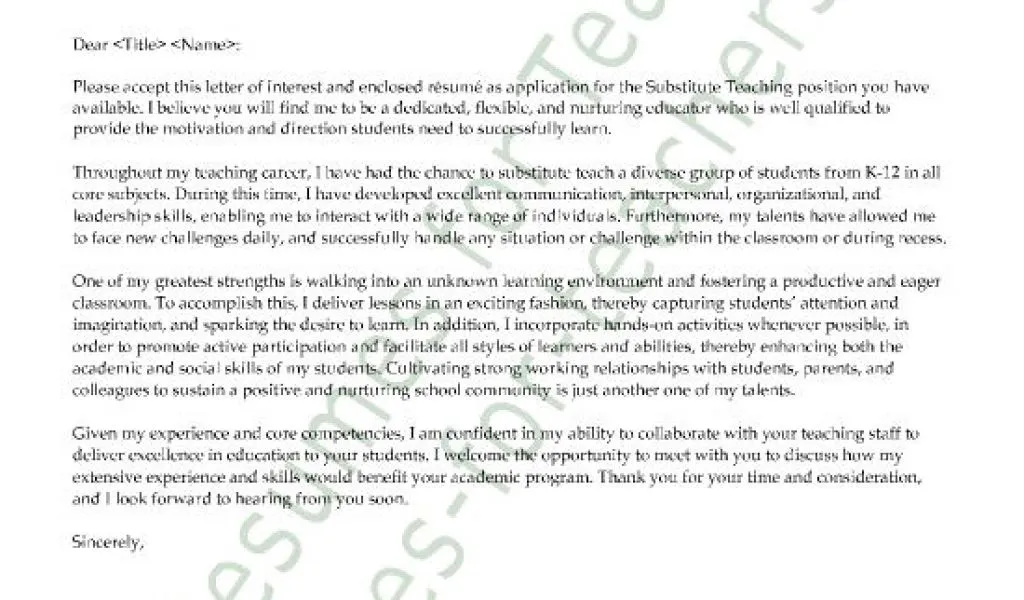Highlight Your Skills & Experience
Your cover letter is your first impression, so make it count! As a substitute teacher, you’re not just filling in a role; you’re stepping into an environment where consistency and structure are crucial. That’s why highlighting your relevant skills and experience is paramount. Think about what makes you a strong candidate. Do you have experience working with specific age groups or subjects? Have you worked in diverse classroom settings? Do you have any special certifications or training, such as in special education or classroom technology? These are the details that will immediately catch a hiring manager’s eye. Your cover letter should be a concise, compelling summary of your qualifications and why you are an ideal fit for the role.
Showcase Your Relevant Experience
Detailing your previous experience is vital. This isn’t just about listing jobs; it’s about demonstrating your ability to succeed in a classroom. For each experience, briefly describe your role and responsibilities. If you’ve worked as a teaching assistant, include the grade level and subject. If you’ve volunteered in a school setting, explain your tasks and the skills you developed. Quantify your accomplishments whenever possible. For example, instead of saying ‘Assisted teachers with classroom management,’ try ‘Assisted teachers, resulting in a 15% decrease in classroom disruptions.’ Highlighting these specific examples builds trust and shows your competence.
Emphasize Your Adaptability & Flexibility
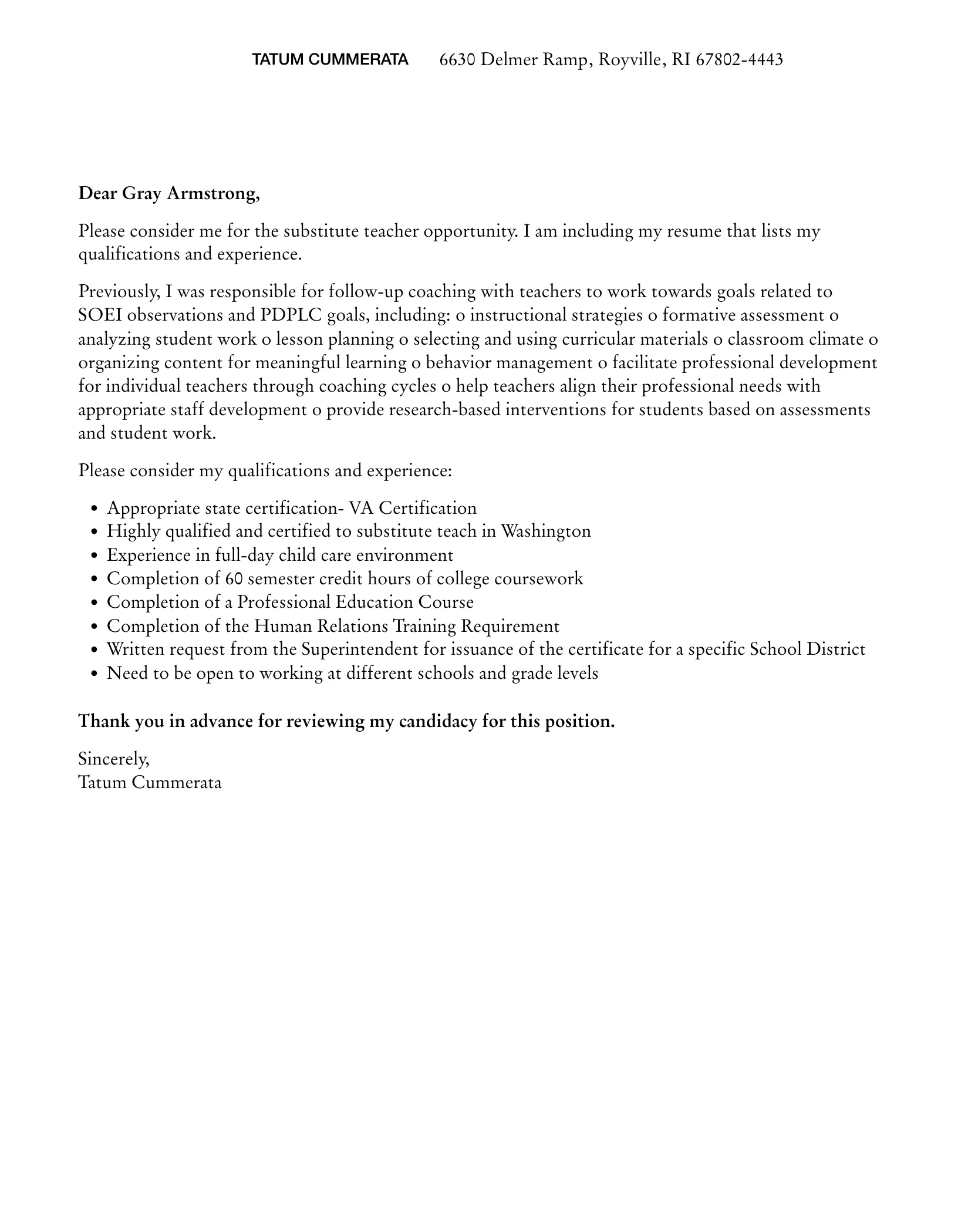
Substitute teaching demands adaptability. You’ll walk into various classrooms with different students, curricula, and school policies. Highlight your ability to quickly adjust to new environments and instructions. Mention your willingness to learn new technologies or teaching methods. Showcase your ability to handle unexpected situations with composure. Give examples of your flexibility. If you’ve successfully managed a classroom with limited resources, mention it. Adaptability demonstrates that you’re prepared to take on any challenges that may arise and ensure a smooth learning environment.
Demonstrate Your Classroom Management Abilities
Classroom management is essential for a successful substitute teacher. Your cover letter should reflect your skills in this area. Briefly explain how you approach classroom management. Do you have experience implementing specific strategies or using positive reinforcement? Mention any training you’ve received on classroom management or behavioral strategies. If you’ve successfully resolved classroom conflicts or maintained a positive learning environment, describe how you did it. Highlight your ability to build rapport with students and create a safe, engaging atmosphere where students can learn. Your focus on effective classroom management techniques can set you apart.
Tailor the Letter to the School’s Needs
A generic cover letter won’t cut it. Tailor each letter to the specific school and position. Research the school’s mission, values, and any specific requirements mentioned in the job posting. This shows that you care and that you’re not just sending out mass applications. If the school emphasizes a particular teaching philosophy or program, mention it and explain how your experience aligns with their values. Customizing your cover letter demonstrates your genuine interest and increases your chances of landing an interview. Take the time to understand what the school needs and show how you can meet those needs.
Research the School’s Culture
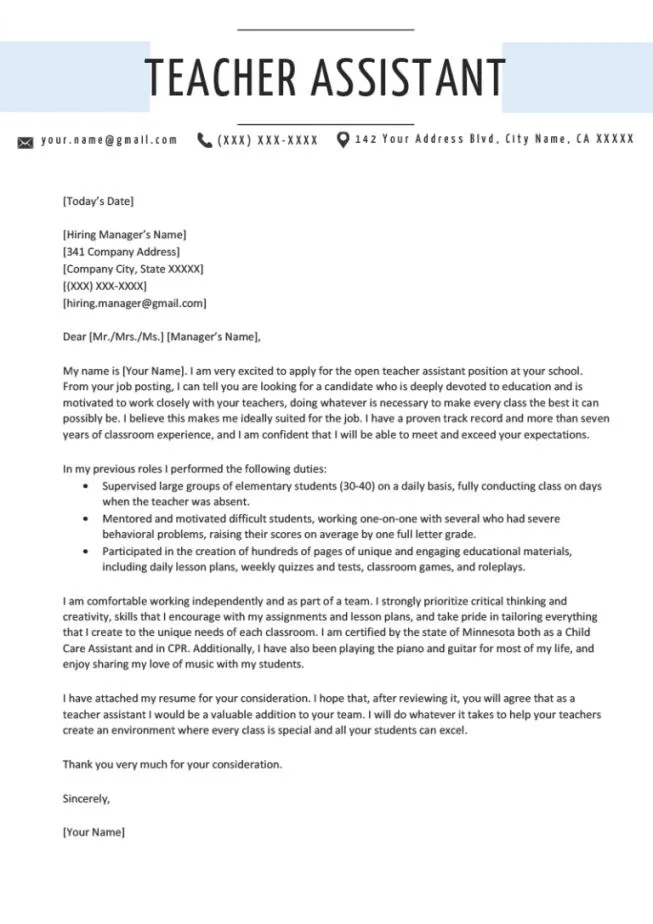
Before you apply, spend some time learning about the school. Visit their website, read their mission statement, and look at any recent news or publications. Knowing the school’s culture will enable you to address your letter more accurately. If the school values collaboration, emphasize your teamwork abilities. If the school has a strong focus on technology, highlight your tech skills. You can even look for the names of the school’s administrators or principals. Including this information in your cover letter makes you stand out from candidates who send generic letters.
Mention Specific Needs
If the job posting highlights any specific needs or requirements, address them directly. Does the school need a teacher with experience in a specific subject or grade level? Do they require a certain certification? Address these needs within your cover letter. This showcases that you have read the job description carefully and are a suitable candidate. Even if you have limited experience in a particular area, you can still highlight relevant skills. If the school’s requirements match your background, explicitly mention it. This attention to detail can significantly improve your chances of getting an interview.
Use Powerful Action Verbs
Action verbs are your best friends. They show what you’ve done and what you can do. Instead of saying ‘I was responsible for,’ say ‘Managed,’ ‘Implemented,’ ‘Collaborated,’ ‘Created,’ or ‘Led.’ These strong verbs make your cover letter engaging and show your proactive approach. Think about your accomplishments and choose action verbs that accurately describe your contributions. For example, instead of ‘Helped students with their homework,’ use ‘Guided students to improve their grades.’ Using these verbs gives the hiring manager a clear picture of your abilities and makes your cover letter more dynamic and memorable.
Show, Don’t Just Tell
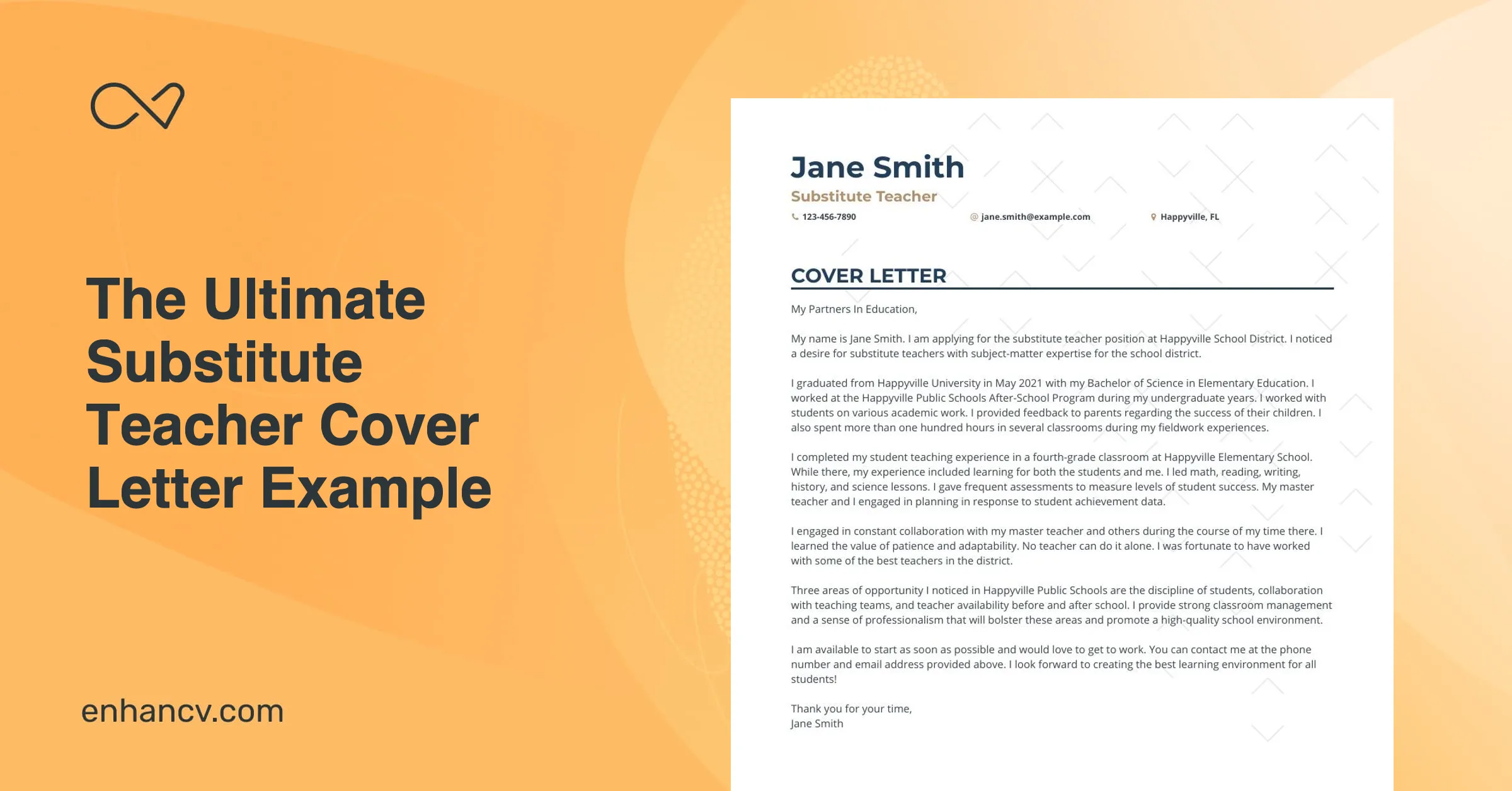
Back up your claims with evidence. Avoid vague statements like ‘I’m a good communicator.’ Instead, give an example. ‘Communicated effectively with parents and teachers through regular updates.’ Provide details that paint a picture of your teaching style, skills, and accomplishments. Illustrate your strengths with specific instances from your previous experiences. If you can quantify your achievements, even better. For example, ‘Improved student engagement by 20%.’ Provide enough specific detail so that the reader can envision your success in the classroom.
Proofread Meticulously
Proofreading is not optional. It’s critical. Before sending your cover letter, read through it multiple times to catch any typos or grammatical errors. Ask a friend or family member to proofread it as well. A single mistake can undermine your credibility and make you seem careless. Take the time to check your spelling, grammar, punctuation, and formatting. Ensure the letter flows smoothly and that your message is clear. A polished, error-free cover letter shows professionalism and attention to detail.
Check Grammar and Spelling
Grammar and spelling mistakes are a significant turn-off. Use a spell checker, but don’t rely on it entirely. Sometimes spell checkers miss errors. Read your cover letter aloud to catch awkward phrasing. Also, check for correct verb tenses, subject-verb agreement, and correct punctuation. A well-written cover letter indicates that you can communicate well, which is important for substitute teachers. Good grammar and spelling are a sign of professionalism and shows that you value quality. Take the time to check and double-check your letter.
Format for Readability
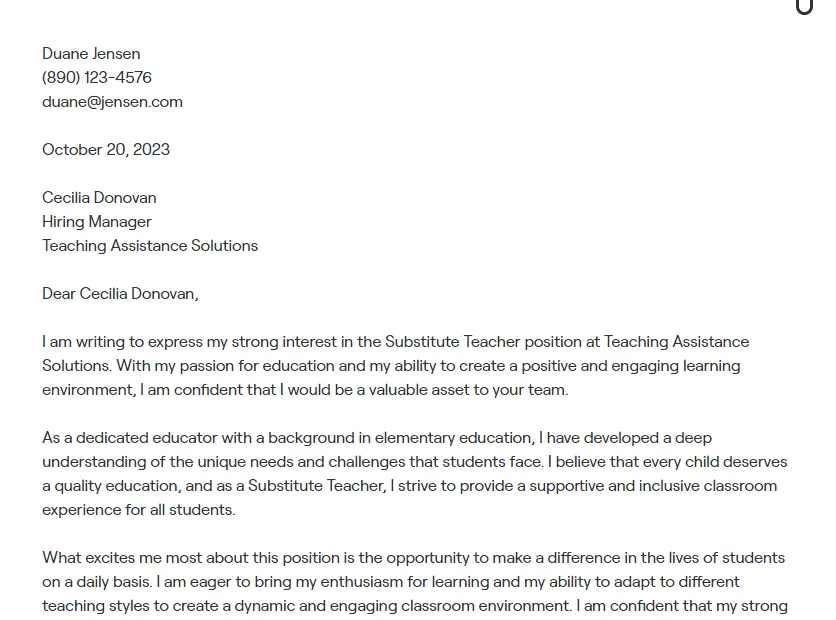
A well-formatted cover letter is easy to read. Use a professional font like Times New Roman, Arial, or Calibri. Keep your letter concise and easy to follow. Use short paragraphs and bullet points to make your points more digestible. The formatting of your cover letter can impact your chances, as it will make it more readable. A well-formatted cover letter demonstrates your attention to detail. A clean and organized document presents you as organized and prepared.
Focus on Enthusiasm & Professionalism
Finally, your cover letter should convey enthusiasm and professionalism. Let your passion for teaching shine through. Highlight your interest in working for the school district. Show that you are serious about substitute teaching and that you will work to meet the needs of the schools. Your cover letter reflects your attitude, which influences how you’re perceived. Be positive, and present yourself as a valuable asset. Remember, a positive and professional attitude will increase your chances of making a positive first impression.
